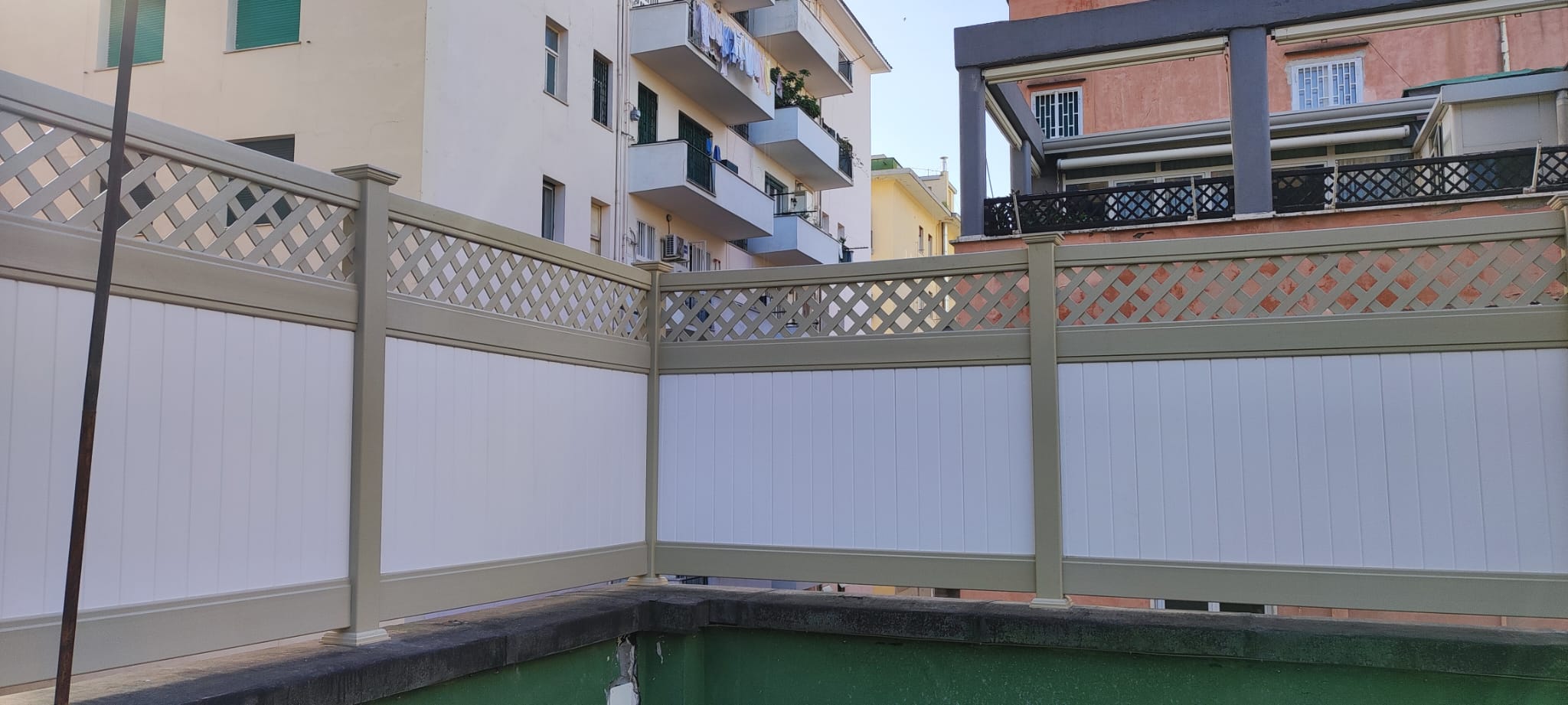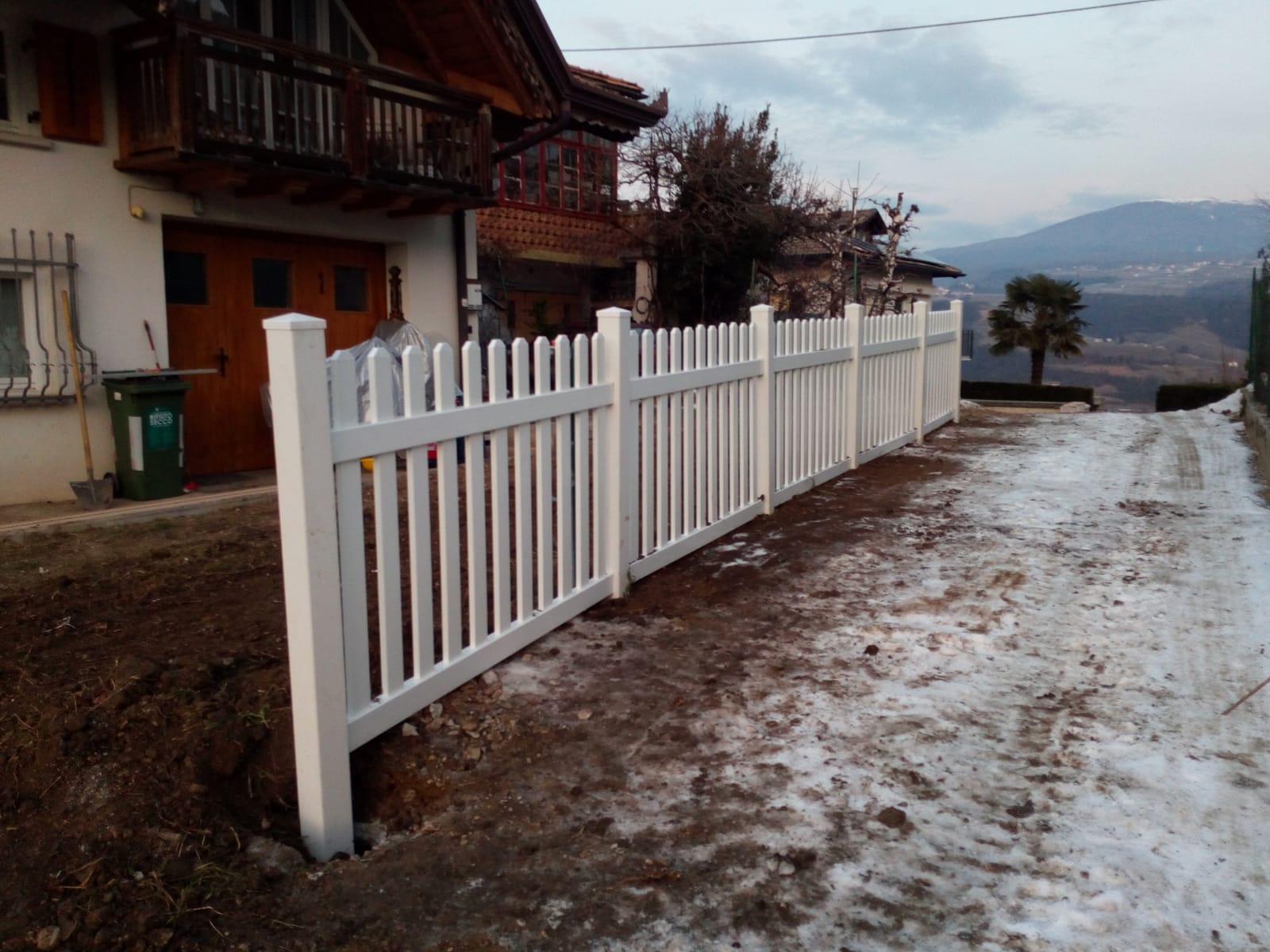Heights and distances: pay attention to measurements
The simple guide to getting it right when fencing your horse area
Fencing your horse area seems like a walk in the park—until you end up with a fence that’s too low. Or too narrow. Or maybe… too high to get through with a wheelbarrow. That’s why measurements matter. If you’re a horse lover with one or two in your backyard, getting the height and spacing of your fence right is essential.
No complicated calculations, promise! Just practical tips—straight to the point and easy to apply. This way, you can avoid escapes, injuries, and unnecessary costs. Let’s take a look at what to watch out for.
How tall should a horse fence be?
The basic rule is simple: better too high than too low. Horses are curious, agile creatures and sometimes… surprisingly athletic. Don’t underestimate them. A fence that’s too low is an open invitation to jumping, escaping, and unwanted adventures.
The recommended standard height is between 140 and 160 cm. This height is suitable for most companion and riding horses. If your horse is particularly lively, it’s better to go for the full 160 cm. Better not to challenge their urge to explore.
If instead you have a pony or a very gentle horse, 120 cm might be enough, but only in highly controlled environments. Always consider the slopes of the terrain: a downhill area can make the fence seem lower, so it’s better to overestimate.
And remember: if the fence is near a low wall or raised area, your horse might use it as a springboard. And then, goodbye fence…
Distance between posts: finding the right balance
Now that you understand the height, let’s talk about spacing between fence posts. The secret here is balance: too many posts and you’ll spend a fortune; too few and the structure wobbles. The ideal distance between posts is 2.5 to 3 meters.
With PVC, you can allow a bit more flexibility because the material is light but strong. However, even in this case, don’t overdo the distances. If the posts are too far apart, the horizontal rails might bend over time, especially with horses that lean or rub against them often.
Want one more tip? If you use a three-rail fence, leave no more than 60 cm between each rail. This prevents the horse from sticking its head between the rails, with all the risks that come with it.
Finally, also consider the distance from the ground: the lowest rail should be at least 30-40 cm above the ground to prevent the horse from pushing under or other animals from easily getting in.
Internal spaces: how much space do you really need?
Another common mistake is underestimating how much space is needed inside the fence. We’re not just talking about square meters, but also about space organization. Your horses need to move freely, eat, run, and rest without feeling “boxed in.”
For an adult horse, even just one, the recommended minimum paddock size is at least 400-600 sqm. If you have two, it’s best to go up to 1000 sqm or more, if space allows. Yes, it’s a lot, but remember that horses also need privacy and freedom.
If you have less space, you could divide the areas between movement and rest, or alternate outings between the two horses. In any case, the fence layout must respect certain distances: avoid tight corners, narrow passages, or sharp curves. Horses don’t like feeling “closed in.”
And don’t forget to leave space for yourself too, to pass with the tractor, wheelbarrow, or simply to take a peaceful walk alongside your four-legged friend.
Bonus: small tips that make a difference
- Avoid posts that are too thin, even if they look more elegant. They need to withstand weather and impact, even accidental.
- Rounded or clearly visible corners help prevent accidents. If you use white PVC, you’re already off to a good start: it’s easy to see even at sunset.
- Use straight lines if possible, or wide curves. Horses see clear and defined spaces better.
- Don’t skimp on the safety of the closures. A nice fence is useless if the gate opens by itself…
Materials that deteriorate faster
Avoid these common traps when choosing the fence for your horses
At first glance, all materials seem like a good idea. Nice treated wood, sturdy mesh, maybe some metal here and there. But the truth is, when it comes to horse fences, not all materials last over time. Some start to deteriorate much faster than you’d think, especially if you live in hilly areas with humidity or temperature swings.
In this article, we’ll look together at the most common materials that age poorly, why it happens, and how to avoid it with smarter choices. That way, you can enjoy your paddock without having to replace, repair, or patch your fence every year.
Wood: beautiful but fragile (more than you think)
We all know: wood looks beautiful, giving a rustic and natural touch that fits perfectly with outdoor life. But when it comes to fences, wood has a long list of enemies. Rain, sun, mud, mold, and even the horses themselves, who often lean on it, lick it, or nibble it out of boredom.
Over the seasons, even treated wood begins to swell, splinter, or rot in some spots. If you live in a humid area or where it rains often, be prepared to see your beautiful fence turn into a battlefield against nature.
The problem isn’t just aesthetic. Splinters can injure horses, posts can become unstable, and some parts can break under weight or a simple push. And if you think one coat of wood preservative a year is enough to fix everything, you’re wrong: wood needs constant maintenance.
Wire mesh: cheap but… rusty
When you’re looking for a quick and cheap option, wire mesh seems perfect. Easy to install, lightweight, visually acceptable, and tall enough to keep horses in. But beware: wire mesh is a temporary solution, not a long-term choice.
The first problem is rust, especially if the metal isn’t galvanized or treated for outdoor use. Just one rainy winter or a particularly humid area can start showing rust spots, broken wires, and loose knots. And when the mesh starts to give way, it can become dangerous.
Horses, being curious, might try to push or scratch against the mesh. Thin wires can easily bend or break, creating sharp edges that pose a serious risk. Not to mention, a horse caught in damaged mesh is a scenario no one wants to face.
Also, aesthetically, the mesh quickly loses its appeal. It sags, bends, and becomes a messy element in your outdoor space. In short, good for temporary use, but not suitable if you want something that lasts over time.
Iron: strong but hard to maintain
Have you ever thought of using iron for a solid fence? It seems like a professional choice, and indeed iron is extremely strong against pressure and weight. But unfortunately, it also has its weaknesses, and the main one is, again, rust.
Iron needs regular treatments, like painting or galvanizing, to withstand the elements. And if you skip a year of maintenance, it notices right away. Once rust starts eating away at the most exposed parts, stopping it is complicated and costly.
Plus, iron can become dangerous if the fence gets damaged. A bent post, a broken weld, a sharp edge… that’s not exactly what you want in your paddock. And let’s be honest: installing an iron fence isn’t a weekend job, but a technical and often costly commitment.
What can you do to avoid these problems?
Now that you know the more “fragile” materials, you might be reconsidering the fence you wanted to build next spring. And rightly so! The ideal is to look for a material that withstands the weather, doesn’t deteriorate over time, and requires little or no maintenance.
Many horse owners have started choosing PVC because it’s lightweight, durable, doesn’t rust or rot. Plus, it’s easy to clean, splinter-free, and can last up to 20 years without needing paint or special treatments.
How to assess the risks of escapes or injuries
Is your fence truly secure against a curious horse?
Maybe you think that just installing a tall, sturdy fence is enough, and that’s it. Too bad horses aren’t predictable animals. Sometimes they act like affectionate puppies, other times like circus acrobats with an escape obsession.
Carefully assessing the risks of escapes or injuries is the foundation for keeping your horses safe, calm, and unharmed. In this guide, I’ll walk you through the most common mistakes, signs to watch for, and precautions to take.
Beware of what seems harmless
Your paddock may seem safe, but it takes little for it to become a hidden trap. A protruding nail, a broken board, a sharp stone right under the low wire. Small things the human eye ignores, but a curious horse might explore with its nose and hoof.
Start your inspection by walking around the entire fence perimeter. Check every post, every joint, every corner. If you use wood, look for splinters or cracks. If you have metal or mesh, make sure there are no rusted or inwardly bent parts. If the fence is PVC, still watch for any loose parts or fastenings.
Remember, a horse doesn’t actively seek danger but ends up in it when something scares, bores, or intrigues them. So even a tight corner, a poorly closed opening, or a gate that’s too light can become an invitation to escape.
A horse’s behavior tells you a lot
You don’t need thermal cameras or smart sensors. Just watch your horse’s behavior in the first days inside the fence. Does it approach a certain spot too often? Try scratching against a specific post? Make small attempts to jump or push?
These signals need to be heeded. Horses communicate a lot through their body and interact with the environment in ways that often foreshadow problems. If one of your horses starts pushing against a section of the fence every day, it’s likely that sooner or later something will give way.
Stress can also lead to dangerous behaviors. If a horse feels isolated, bored, or has too much pent-up energy, it might release it by trying to jump over, chew, or scratch everywhere. A safe fence must take this into account as well.
Want a practical tip? Make the fence visually clear, for example by using contrasting colors. White PVC, for instance, is visible even at sunset. A well-visible fence reduces the risk of the horse accidentally running into it.
Escape or injury? Prevention is easier than cure
Now let’s talk about the two worst scenarios: escape and injury. In both cases, the key word is prevention. An escape might seem almost funny until you find yourself searching for the horse in the neighbor’s field—or worse, on the road.
To reduce the risk of escape, always check that the fence is tall enough, well anchored to the ground, and free of footholds. The horizontal rails shouldn’t be too far apart, or the horse can stick its head through. Also avoid gaps too wide under the fence, especially if you have small or young horses.
To prevent injuries, remove any sharp corners, edges, nails, or protruding parts. Horses get hurt easily, even just by tripping. Treating a cut leg or a wound on the side can become a real ordeal (and an unexpected expense).
Another important aspect is the gate. It must always close securely, without leaving gaps between the doors or underneath. And above all, it shouldn’t open if the horse pushes it with its nose or chest.
If you want peace of mind, also consider installing a double fence in the most sensitive areas, like near the entrance or along roads. Yes, it’s an investment, but it will pay off with years of calm.
Why PVC can solve many problems
The material that doesn’t squeak, rust, or ask for maintenance
Every rider dreams of a fence that lasts over time, doesn’t get damaged, and doesn’t drive you crazy with maintenance and hidden costs. The problem? Many materials look perfect on paper but in reality give way under rain, sun, impacts, or overly curious hooves.
What if I told you there’s a material that withstands the weather, is safe for horses, and lasts for years without asking for anything in return? Yes, I’m talking about PVC. And no, it’s not just for windows and shutters. It’s also one of the best allies for fencing paddocks, pastures, and private equestrian spaces.
Let’s see together why PVC can really simplify your life, solve small and big problems, and let you enjoy your horses in complete peace.
Goodbye constant maintenance: PVC asks nothing of you
If you’ve used wood before, you know: every season demands treatment, inspection, and repairs. And often, an expense. Between rain, humidity, and horses scratching or nibbling for fun, wooden fences age quickly.
PVC, on the other hand, is a material completely resistant to weather conditions. It doesn’t absorb water, warp, rot, splinter, or fade in the sun. Once installed, you can truly forget about it.
Cleaning? A hose down and it’s as good as new. No sanding, repainting, sealing, or yearly treatment required. The time you save could be spent riding, walking, or – why not – relaxing under a tree with your horse by your side.
And it’s not just about effort. Every wood treatment comes at a cost. With PVC, you pay once and that’s it. And in the long run, that makes a difference.
Top safety: no splinters, no rust, no risks.
You know how curious horses are. They rub, sniff, scratch… and sometimes launch into little bursts of creative escape. That’s why the fence must be safe at every point—no sharp edges, no parts that give way or break.
With wood, you risk splinters and broken boards. With metal, rust and sharp edges. With wire, dangerous entanglements. PVC, on the other hand, is smooth, flexible yet strong, and has no hazardous parts—even after years of use.
If your horse pushes against a rail or scratches on a post, there’s no risk of cuts or injuries. This is especially useful if you have young, lively, or just overly friendly horses when it comes to fences.
And there’s one more advantage: PVC is highly visible, especially in white. This helps horses recognize the boundary even at dusk, avoiding accidental bumps or sudden movements. More safety for them, more peace of mind for you.
Neat look, zero effort: the paddock makes a great impression.
Let’s face it: looks matter too. Maybe you’ve put care into every detail of your space—from the stable to the flower beds—and you want the fence to look good as well. PVC has an elegant, clean, modern appearance that fits perfectly in rural or hillside settings.
Unlike wood, it doesn’t fade. Unlike iron, it doesn’t rust. And unlike wire, it doesn’t deform. It stays straight, neat, and visually pleasing even after years. Perfect if you run a farmhouse, host guests, or simply love order.
And then, here’s a bonus: many PVC systems are modular and customizable, so you can adjust the height, length, and layout to fit your space. And if one day you decide to change the fence, you can do it without dismantling half the world.
Conclusion: the fence that gives you peace of mind.
When it comes to horses, every decision matters. And the fence is one of the most important. It’s not just about marking a space, but about protecting, simplifying, and enhancing your relationship with the animal and the environment you live in.
PVC isn’t a passing trend. It’s a smart solution for those who want more time for their horses, less worry, and above all, a fence that works. Simple, durable, safe, beautiful. And, importantly, with no long-term surprises.
If you’re about to build or replace your paddock, consider PVC. It might not be love at first sight, but it could be at the first rain. Or the first summer without maintenance. Or when your horse stops playing with splinters.







Leave A Comment